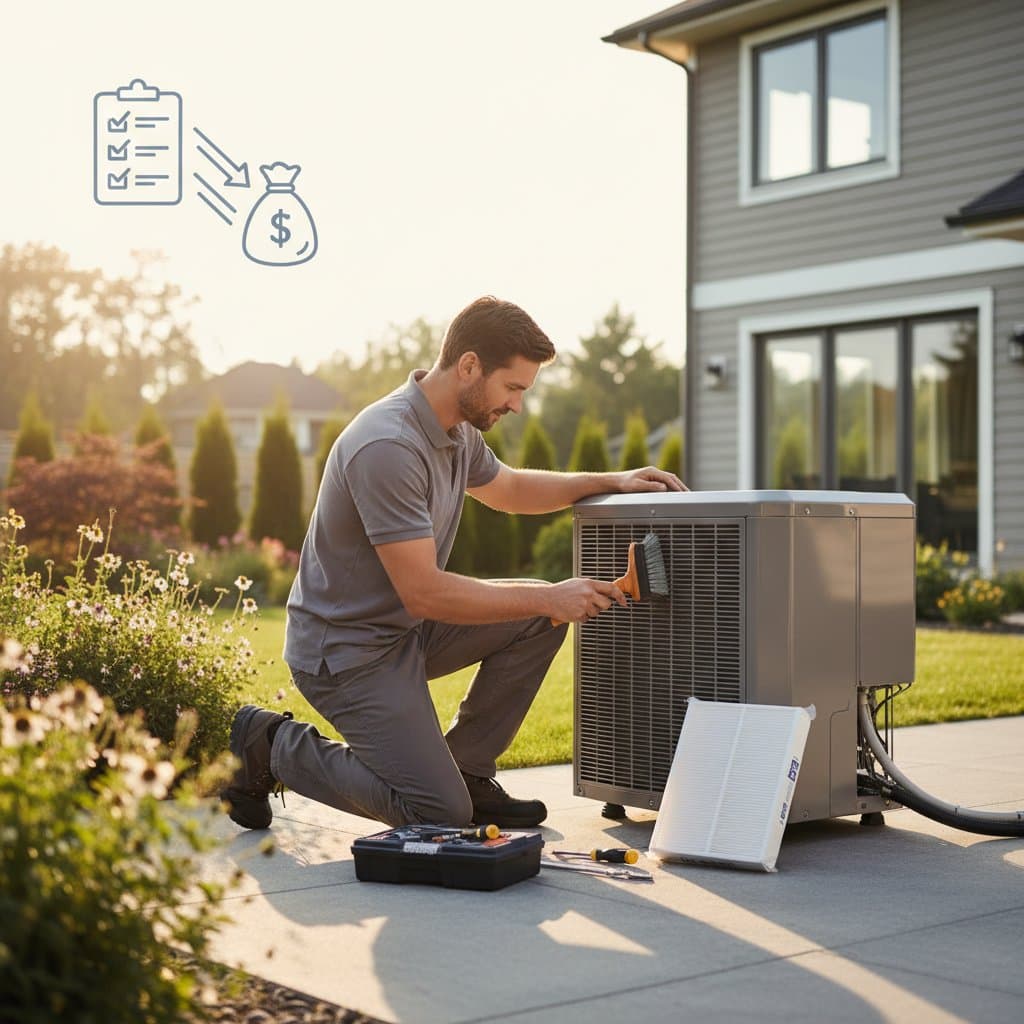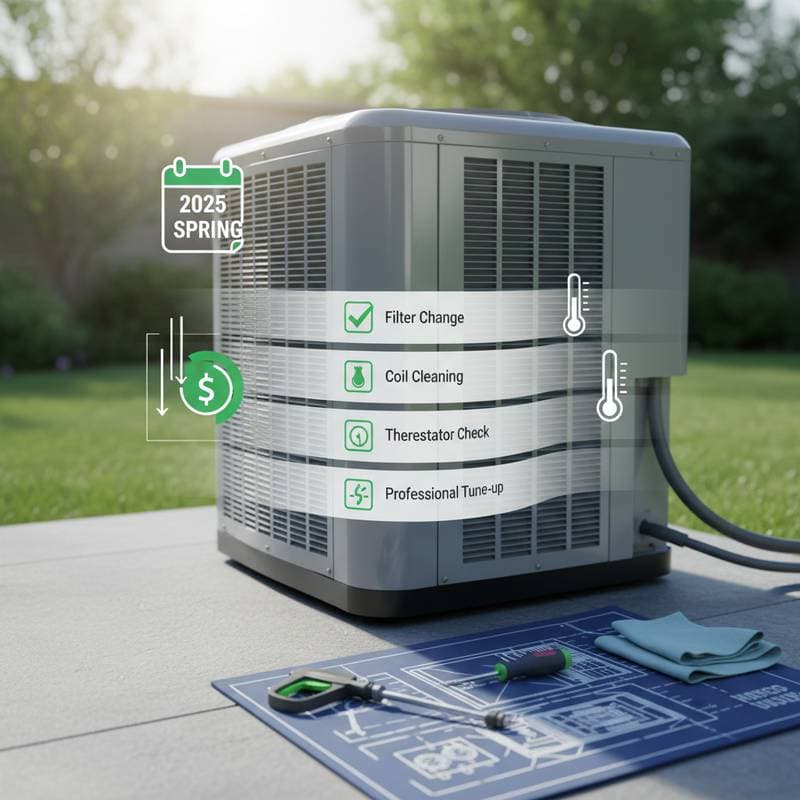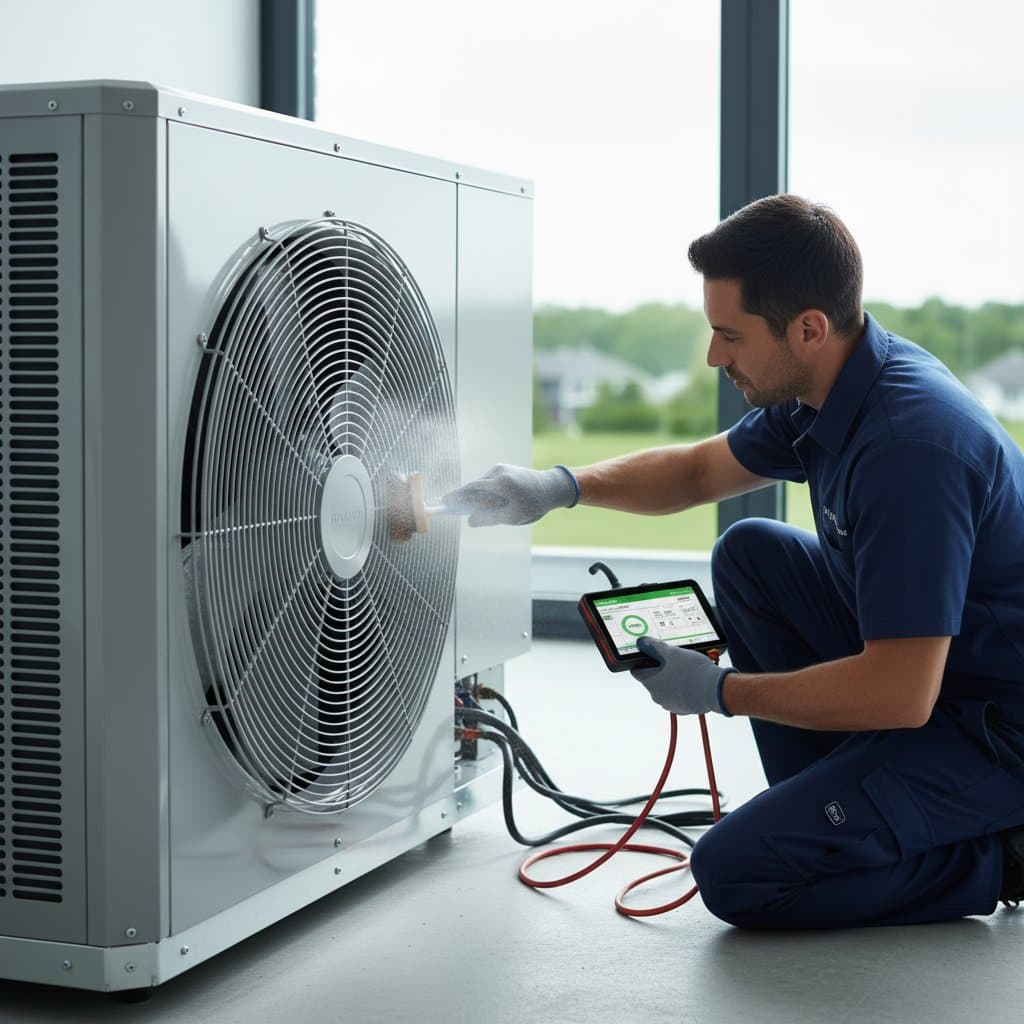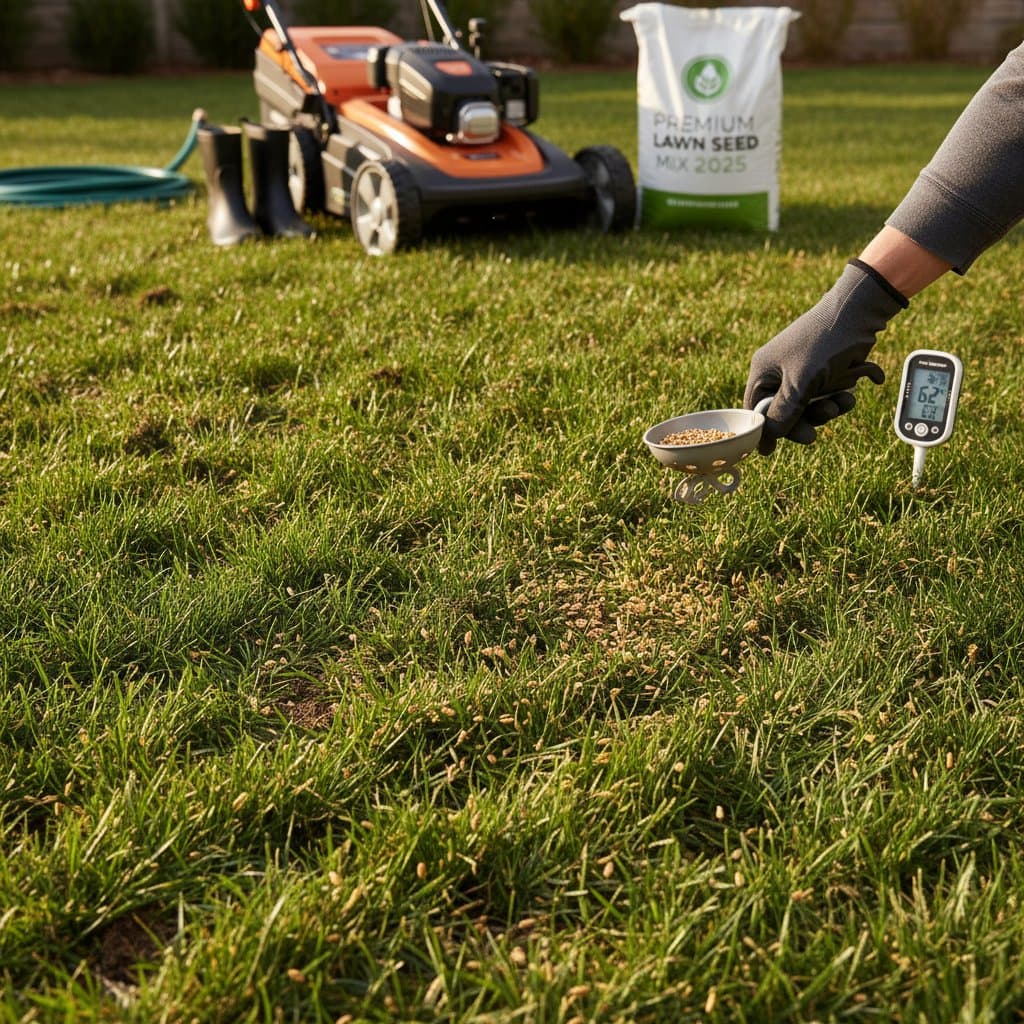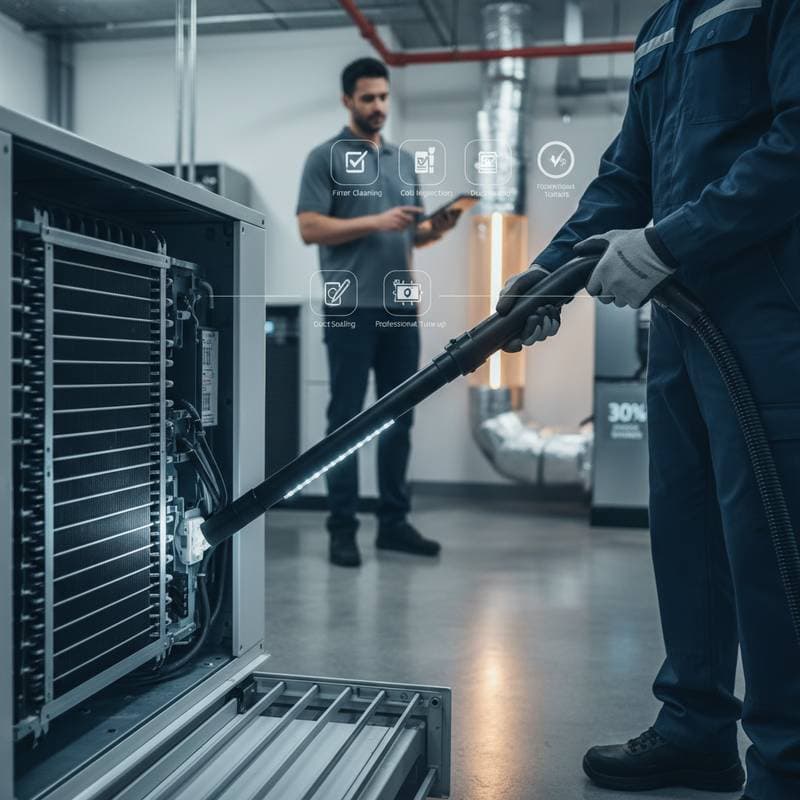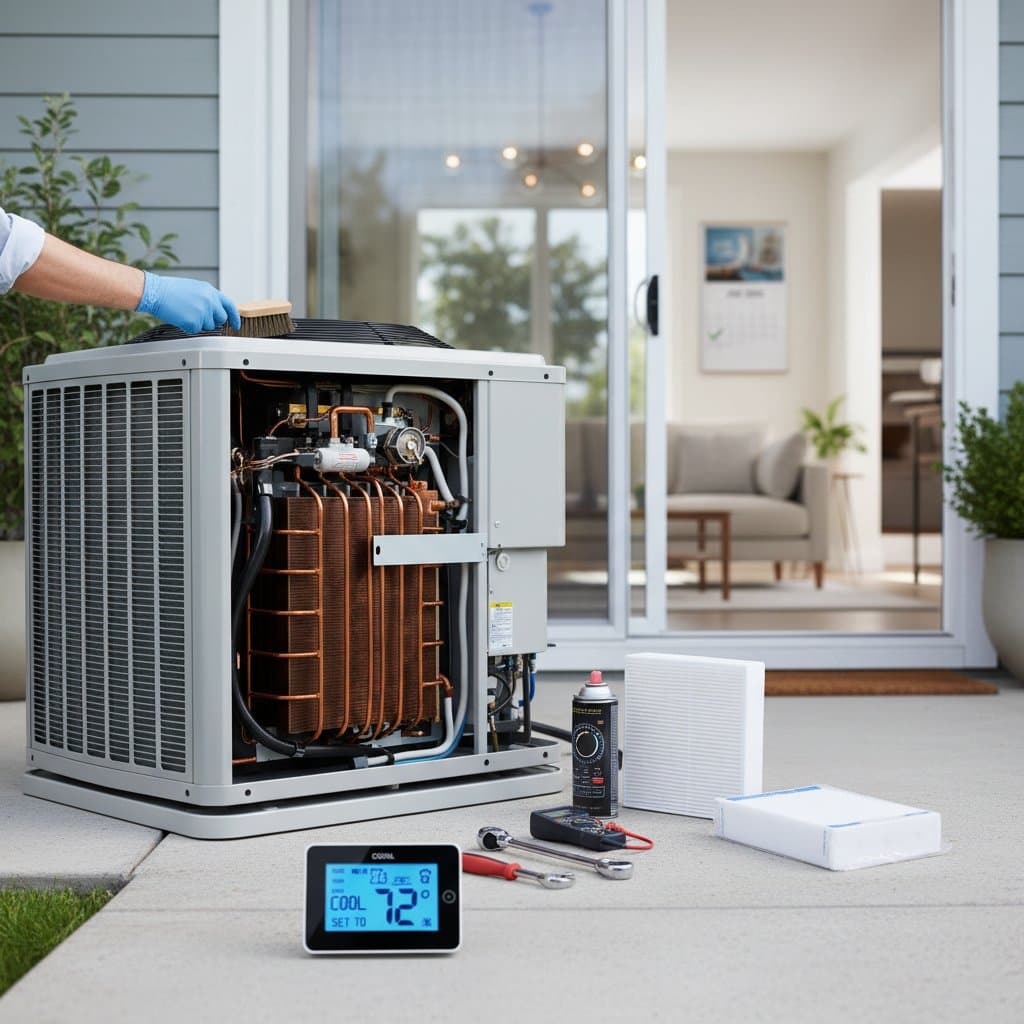Why Early AC Preparation Delivers Major Savings for Summer
As temperatures rise, many homeowners delay air conditioner maintenance until the last moment. The more effective strategy involves readying the system well in advance of peak heat. This preparation maintains home comfort during critical periods while lowering costs, optimizing energy consumption, and avoiding expensive repairs.
Anticipating seasonal demands ensures the system operates without strain or failure as heat intensifies. The following sections explain the key advantages of proactive preparation and provide guidance on implementation.
Key Benefits of Early AC Preparation
Reduced Energy Expenses
A well-maintained air conditioner consumes less electricity. Accumulated dust, obstructed filters, and degraded components compel the unit to labor excessively. Technicians who clean the coils, verify refrigerant charges, and apply lubrication to mechanical elements enable seamless operation. Consequently, daily usage translates to noticeably lower utility statements.
For instance, a clean system might operate at 15 to 20 percent higher efficiency than one burdened by neglect. Homeowners often report savings of 10 to 25 percent on cooling costs through these simple interventions performed before summer begins.
Minimized Risk of Emergency Repairs
Conducting checks prior to high-demand periods allows professionals to address minor faults before they escalate. An example includes a slightly frayed fan belt or a condenser coil coated in grime, issues that appear minor in mild weather but lead to complete shutdowns during intense heat. Proactive evaluations significantly decrease the likelihood of failures on the most sweltering days.
This foresight prevents the inconvenience of sudden outages and the associated premium pricing for urgent interventions. Systems inspected early demonstrate greater reliability, with many owners experiencing uninterrupted service throughout the season.
Improved Scheduling and Service Access
Heating, ventilation, and air conditioning providers face overwhelming demand as warmth spreads. Booking appointments in advance secures preferred time slots and may qualify for standard rates rather than surge pricing. Professionals can dedicate sufficient attention to comprehensive assessments without the rush of consecutive jobs.
Early engagement often results in detailed reports and recommendations tailored to specific units. This thoroughness uncovers potential improvements that enhance overall performance.
Extended Equipment Durability
Consistent annual upkeep prolongs the operational life of air conditioning units. Interventions before heavy use prevent accelerated deterioration of vital parts. As a result, replacement becomes a distant concern rather than an imminent expense.
Moreover, documented maintenance supports warranty claims from manufacturers, which typically mandate regular servicing. Units receiving timely care often last 12 to 15 years or more, compared to eight to ten years for those lacking attention.
Essential Checklist for Early AC Maintenance
Follow this sequence of tasks to ready your system effectively. Perform them during off-peak months for optimal results.
-
Replace or clean air filters: Exchange standard filters every one to three months based on household occupancy and pet presence; reusable models require gentle vacuuming or washing.
-
Examine outdoor condenser units: Remove accumulated leaves, twigs, grass clippings, or soil that impede airflow; ensure at least two feet of clearance around the unit.
-
Verify refrigerant levels: Professionals use gauges to confirm proper charge; low levels indicate leaks that demand immediate repair to avoid compressor damage.
-
Clean evaporator and condenser coils: Brush away dirt and debris gently; for stubborn buildup, apply coil cleaner and rinse thoroughly to restore heat transfer efficiency.
-
Inspect ductwork and vents: Seal any visible gaps with mastic or foil tape; vacuum registers to eliminate dust that reduces airflow by up to 20 percent.
-
Calibrate the thermostat: Test settings against a separate thermometer; upgrade to a smart model for automated adjustments that optimize runtime and savings.
-
Lubricate fans and motors: Apply manufacturer-recommended oil to bearings; this reduces friction and noise while extending component life by several seasons.
-
Review electrical components: Tighten connections and clean terminals to prevent arcing; replace frayed wires to safeguard against shorts.
| Maintenance Type | Typical Cost | Potential Savings | Notes |
|---|---|---|---|
| Routine Annual Tune-Up | $75–$200 | Avoids $500–$1,500 repairs | Includes full inspection and minor adjustments |
| Emergency Breakdown Repair | $300–$1,000+ | N/A | Involves after-hours fees and rushed labor |
| Compressor Replacement (Prevented) | $1,500–$2,500 | Up to 100% avoidance | Common failure from neglected refrigerant issues |
Long-Term Financial Advantages of Proactive Preparation
Systems under regular care achieve energy efficiency gains of 20 to 25 percent relative to those ignored. Such diligence curtails the need for costly substitutions like compressors or blower motors, which can exceed $2,000. Identifying and resolving minor concerns promptly eliminates premiums for weekend or holiday service calls.
Additionally, early diagnostics reveal inefficiencies in home insulation or duct sealing that leak conditioned air. Addressing these enhancements before heat arrives amplifies cooling distribution and further trims operational expenses.
Homeowners who invest in spring preparations frequently recoup costs within the first summer through bill reductions and averted crises. Over multiple years, the cumulative effect supports substantial budget relief.
Balancing DIY Tasks with Professional Expertise
Homeowners can manage straightforward duties such as filter changes and debris clearance using basic tools and safety precautions. These actions maintain baseline performance without specialized knowledge.
However, tasks involving refrigerant handling, electrical diagnostics, or coil deep-cleaning require licensed technicians. Their equipment ensures precise adjustments and adherence to environmental regulations, mitigating risks like refrigerant leaks or electrical hazards.
During a professional visit, request demonstrations of safe self-maintenance routines. This education empowers ongoing care while preserving warranty integrity and system safety.
Establish a Reliable Preparation Routine
Initiate your air conditioner readiness in early spring, well ahead of rising temperatures. Set calendar alerts for annual reviews and compile a log of inspections, including dates, observations, and technician recommendations.
This systematic practice transforms occasional chores into streamlined habits. With early preparation in place, expect reliable cooling, fiscal prudence, and effortless adaptation to summer conditions.
